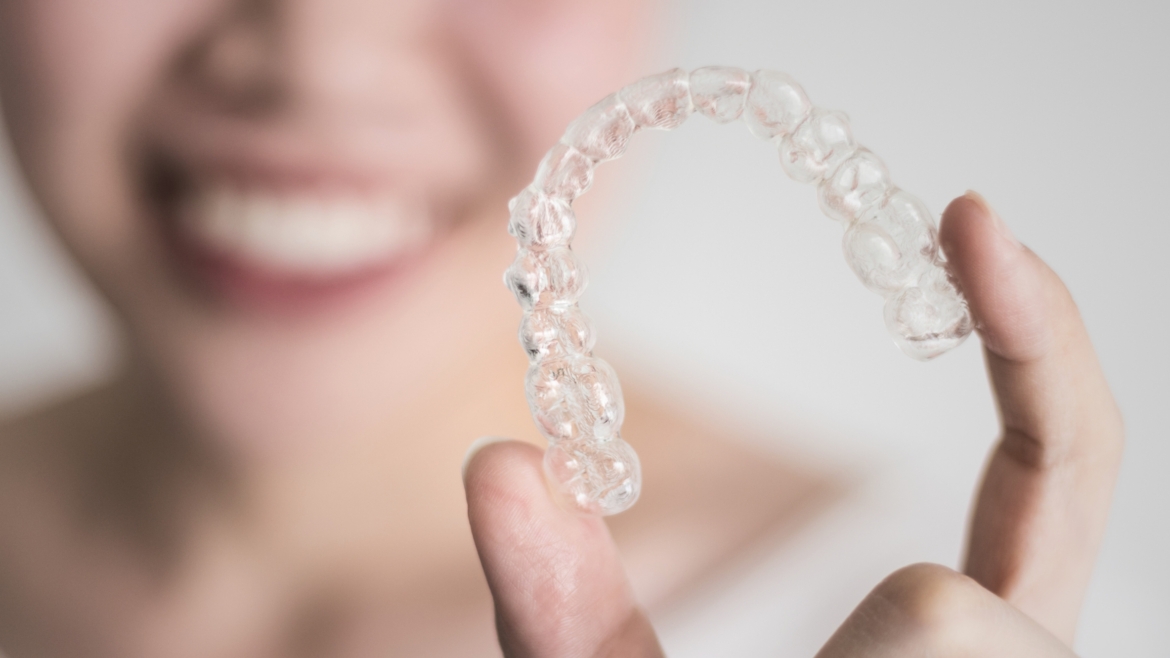Invisalign & Braces
Invisalign
Invisalign works to straighten your teeth by using a series of clear, comfortable and removable aligners which move your teeth gradually into the desired position. Each aligner is custom-made to suit your specific needs.
Invisalign straightens your teeth using a custom-made series of aligners created for you and only you. These aligner trays are made of smooth, comfortable and virtually invisible plastic that you wear over your teeth. They gradually and gently shift your teeth into place. There are no metal brackets to attach and no wires to tighten. You just pop in a new set of aligners approximately every two weeks, until your treatment is complete. You’ll achieve a great smile with little interference to your daily life. Invisalign uses advanced 3D software, to allow you to see the end results of treatment before you even start. It won’t interfere with your lifestyle.
With modern technology and clear treatment timelines, it’s easy to see why Invisalign has become a popular option for patients wanting to straighten their smile.
Why Invisalign?
Invisalign is a type of orthodontic treatment that uses clear, removable aligners to straighten teeth. It is an alternative to traditional braces and is popular among both teens and adults.
The Invisalign system works by using a series of custom-made aligners that are worn over the teeth. These aligners are made from a clear, BPA-free plastic material and are virtually invisible when worn.
The aligners are designed to gradually move the teeth into the desired position, following a customized treatment plan created by your dentist or orthodontist. Each set of aligners is worn for about two weeks before being replaced with the next set in the series.
One of the key benefits of Invisalign is that the aligners are removable, so you can take them out to eat, drink, brush, and floss. This makes it easier to maintain good oral hygiene compared to traditional braces.
Invisalign is used to treat a variety of orthodontic issues, including crooked teeth, crowded teeth, gaps between teeth, and bite issues such as overbite, underbite, and crossbite.
Overall, Invisalign offers a discreet, comfortable, and convenient way to achieve a straighter smile without the use of traditional braces for the right cases.
Wired Braces
Dental braces, also known as orthodontic braces, are devices used in orthodontic treatment to straighten and align teeth, as well as to correct bite issues. Braces are made up of brackets, wires, and bands that work together to apply gentle pressure to the teeth, gradually moving them into the desired position.
Here’s how braces work:
Brackets: Brackets are small, square-shaped metal or ceramic attachments that are bonded to the front surface of each tooth. They serve as anchors for the wires that move the teeth.
Archwire: The archwire is a thin, metal wire that is attached to the brackets and applies pressure to the teeth. As the teeth move, the archwire is adjusted or replaced to continue the progress of the treatment.
Bands: Bands are metal rings that are placed around the back molars to anchor the braces. They provide additional support for the brackets and wires.
Rubber bands: Rubber bands, also known as elastics, are sometimes used in conjunction with braces to help correct bite issues by applying additional force to move the teeth and jaws into the correct alignment.
Braces are used to correct a variety of dental issues, including crooked teeth, crowded teeth, gaps between teeth, and bite problems such as overbite, underbite, and crossbite. Treatment with braces typically lasts for 1-3 years, depending on the complexity of the case and the desired results.
While braces are effective in straightening teeth and correcting bite issues, they do require regular adjustments and maintenance. It’s important to follow your orthodontist’s instructions carefully and attend all scheduled appointments to ensure the success of your treatment.

